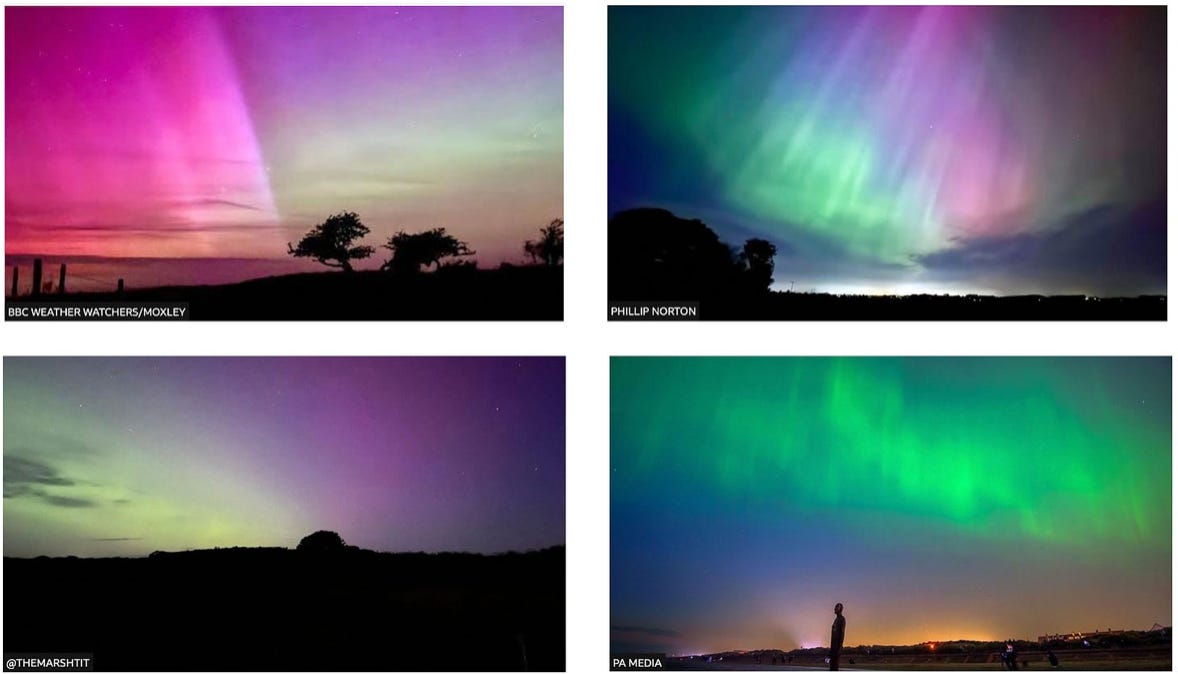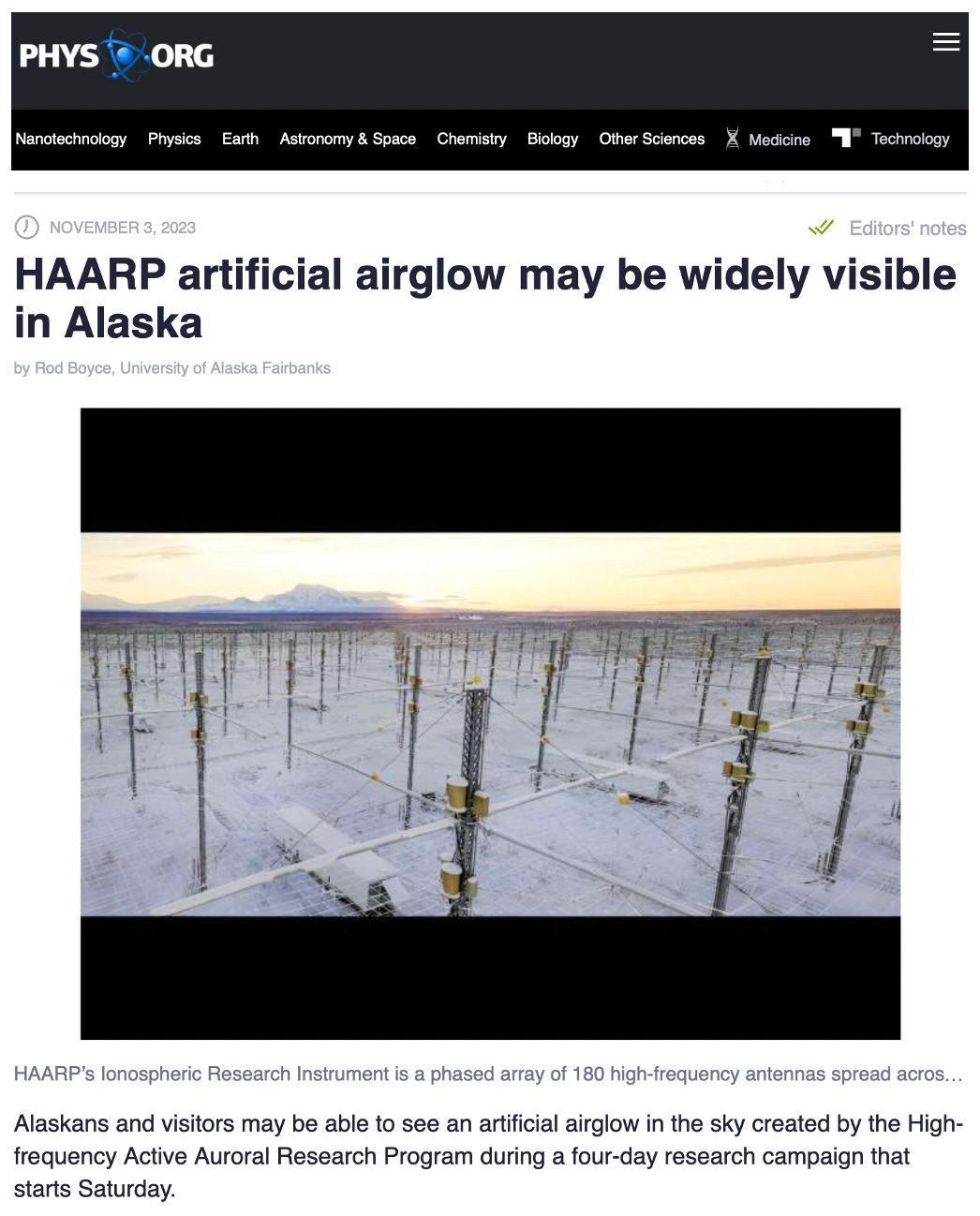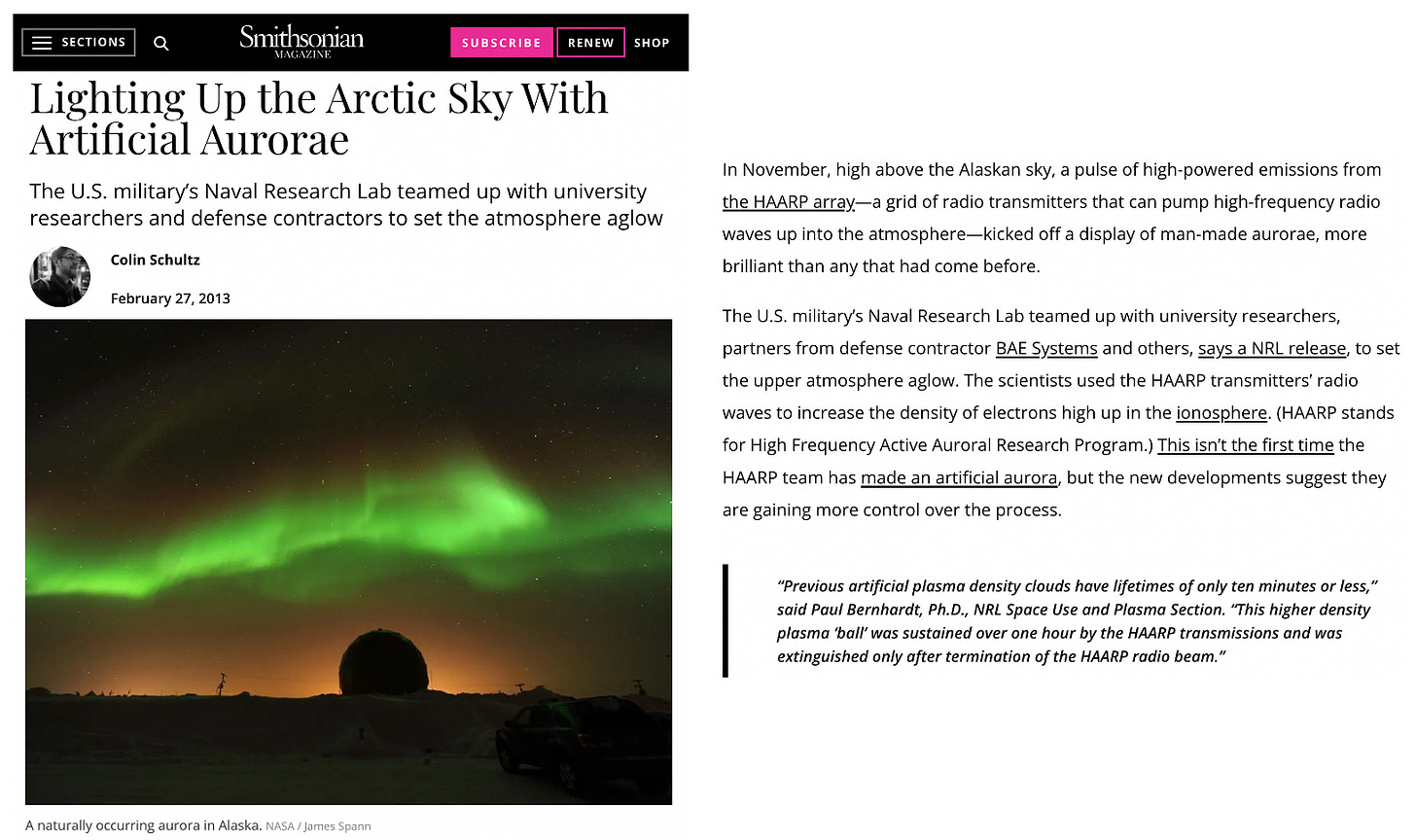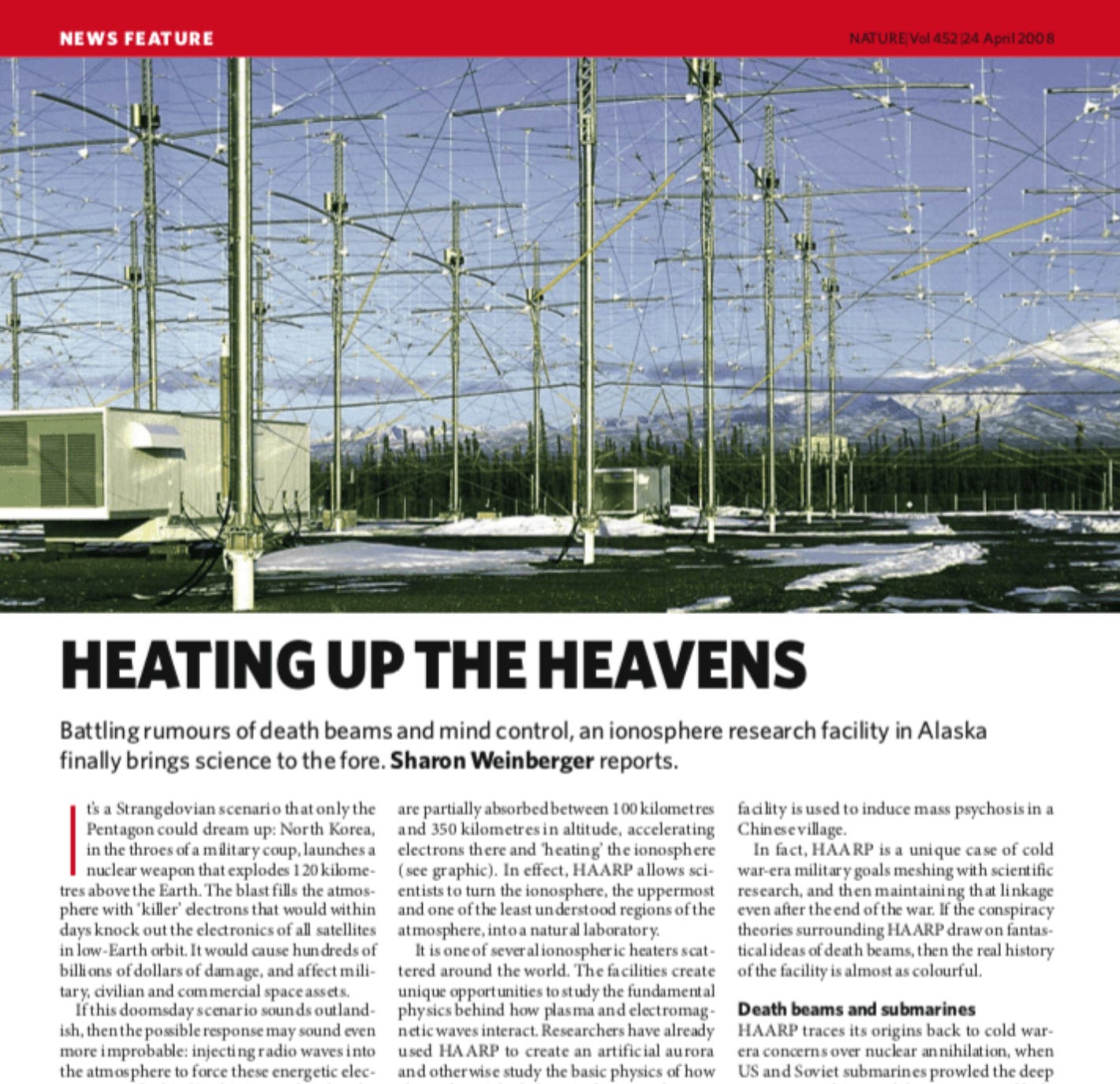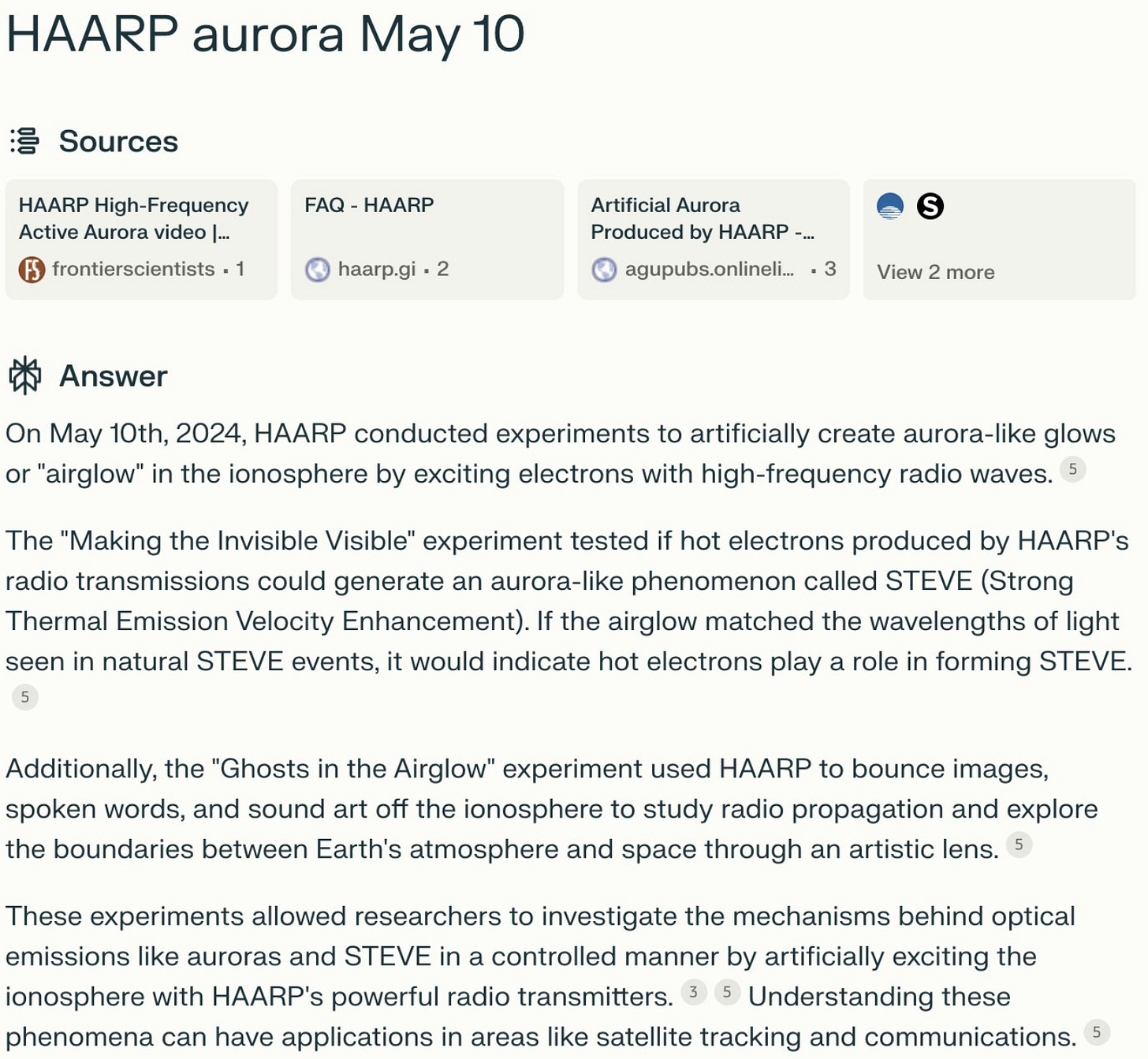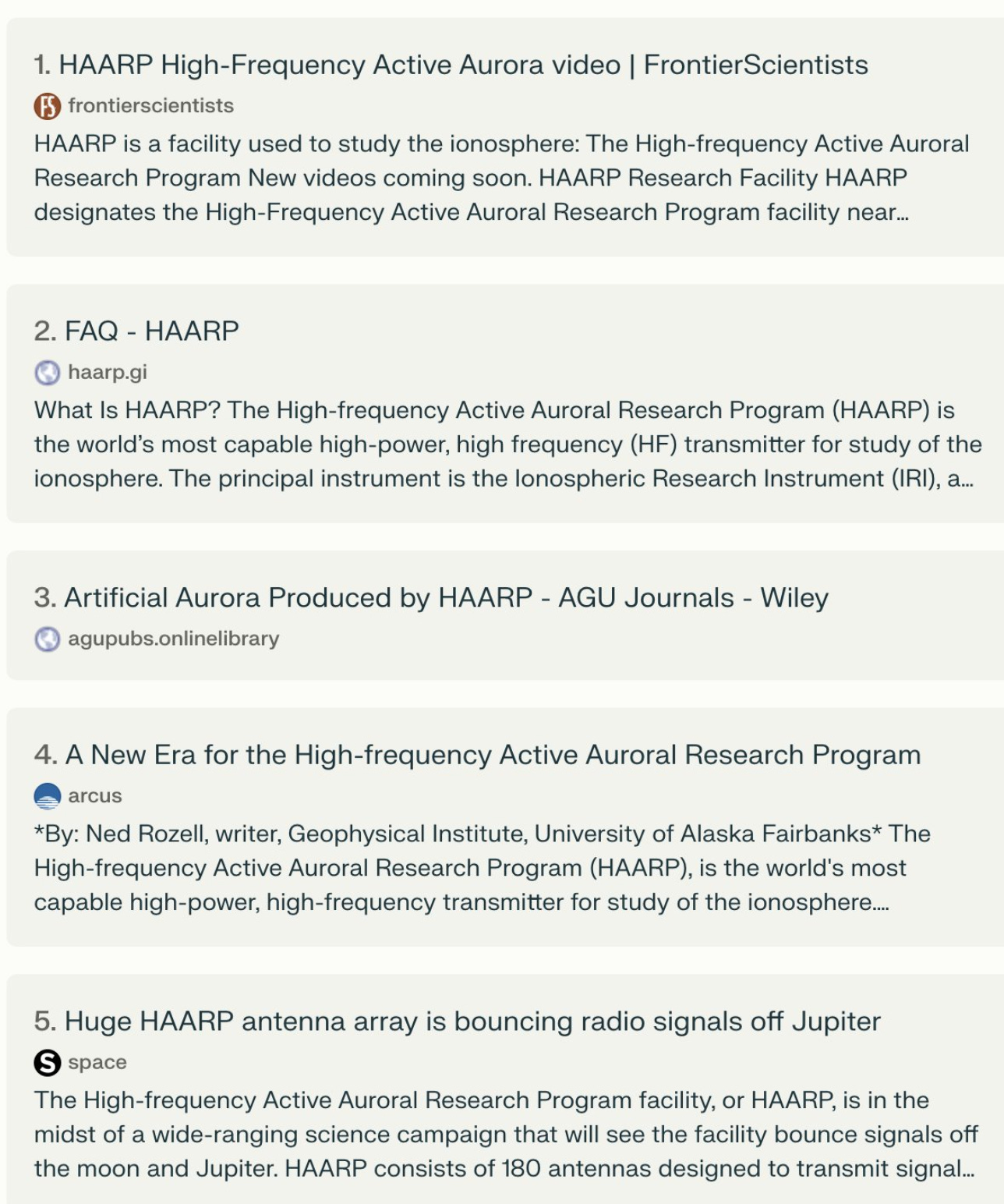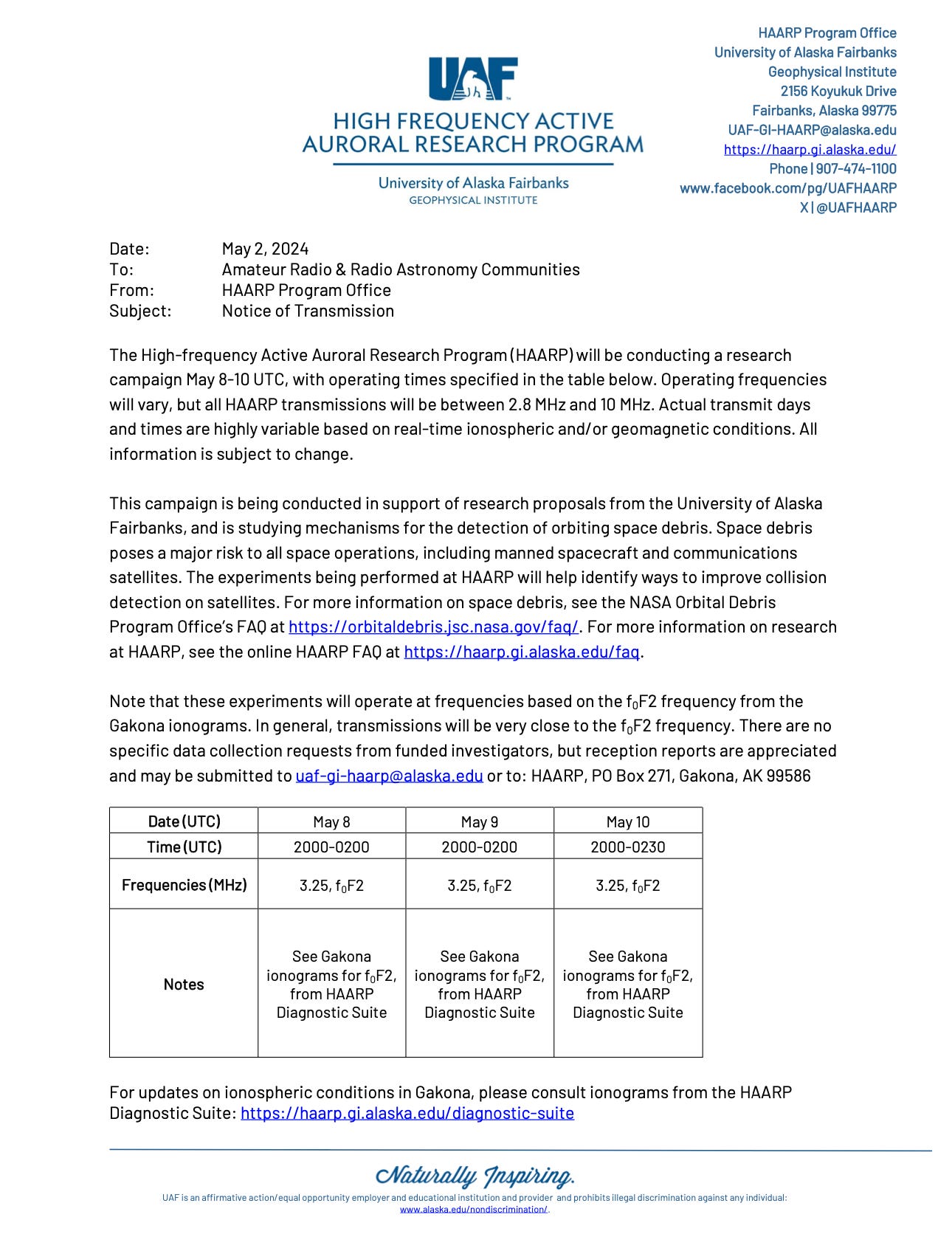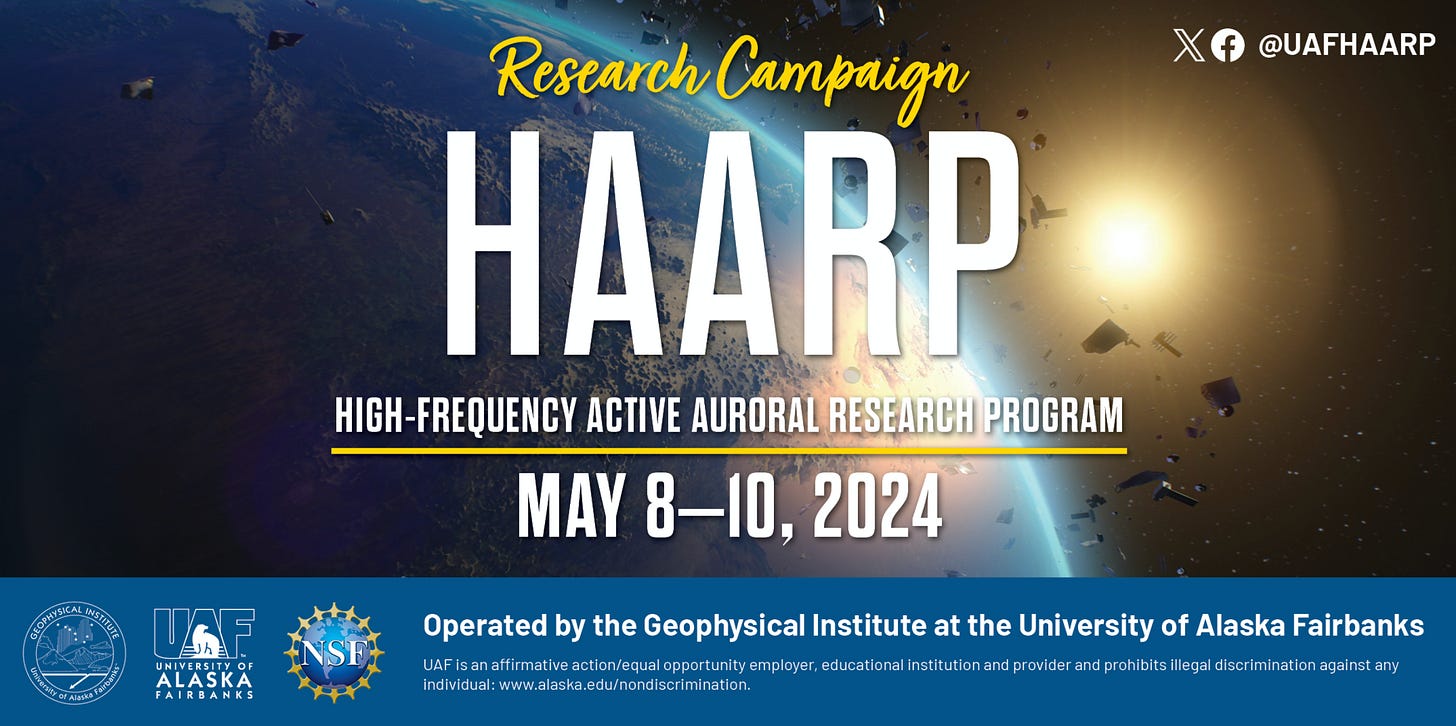Although I did not stay up — let alone go out — to see the show, I did enjoy the spectacular pictures of the recent Northern Lights in May this year.
And again recently:
I’ve seen people say they’ve lived for decades in southern England and never seen anything like the above…
I am not claiming to know what is actually going on here, but I am wondering if these display were wholly natural.
The High Frequency Active Auroral Research Program (HAARP)
This is an article from Phys.org (part of the Science X network of websites) from less than a year ago:
This is an article from 2013:
And this is a 2008 “News Feature” from Nature (Nature link) giving some background on HAARP:
The High Frequency Active Auroral Research Program (HAARP) has been entwined with controversy since its birth. Originally envisioned as a way to facilitate communications with nuclear-armed submarines, HAARP took almost two decades to build and has incurred around US$250 million in construction and operating costs. It consists of 360 radio transmitters and 180 antennas, and covers some 14 hectares near the town of Gakona about 250 kilometres northeast of Anchorage.
With 3.6 megawatts of power at its command, HAARP is the most powerful ionospheric heater in the world. At its heart is a phased-array radar that emits radio waves that are partially absorbed between 100 kilometres and 350 kilometres in altitude, accelerating electrons there and ‘heating’ the ionosphere… In effect, HAARP allows scientists to turn the ionosphere, the uppermost and one of the least understood regions of the atmosphere, into a natural laboratory.
It is one of several ionospheric heaters scattered around the world. The facilities create unique opportunities to study the fundamental physics behind how plasma and electromagnetic waves interact. Researchers have already used HAARP to create an artificial aurora and otherwise study the basic physics of how charged particles behave in the ionosphere.
And stating that:
One of HAARP’s most cited accomplishments is the creation of the first artificial aurora visible to the naked eye. On zapping the ionosphere, HAARP created a green aurora between 100 and 150 kilometres high — in the middle of a natural aurora. “That was something you couldn’t predict,” says Michael Kelley, a physicist at Cornell University in Ithaca, New York, who has been involved with HAARP.
It seems not unreasonable to think that:
the technology in 2008 may well have been rather more advanced than what was described in an article in the public domain
in the 15+ years since, it would be surprising if there had not been significant advances
And that, not least in the context of the above, it does not seem so very speculative to wonder whether the recent Northern Lights show was actually wholly natural. Even at a time of unusual solar activity. Indeed if an experiment were being carried out, and if it were thought that something might happen that — in the words of Michael Kelley quoted above — “you couldn’t predict”, then perhaps a time of unusual solar activity might be considered ideal.
Artificial intelligence
Moreover, I noticed in May that Robert Malone, whose articles in my experience are often well worth reading, put out a post saying that:
The following text is from the subscription AI program (Perplexity) that I use for general searches…
Here are the sources that the AI used to generate the above answer to my query
Which seems consistent with e.g. this:
I noticed that, among other things, the AI text cited by Robert Malone includes the comment that:
[the] experiment used HAARP to bounce images, spoken words, and sound art off the ionosphere
The mind boggles. And I can’t help wondering what else we might see in the sky in years to come…




